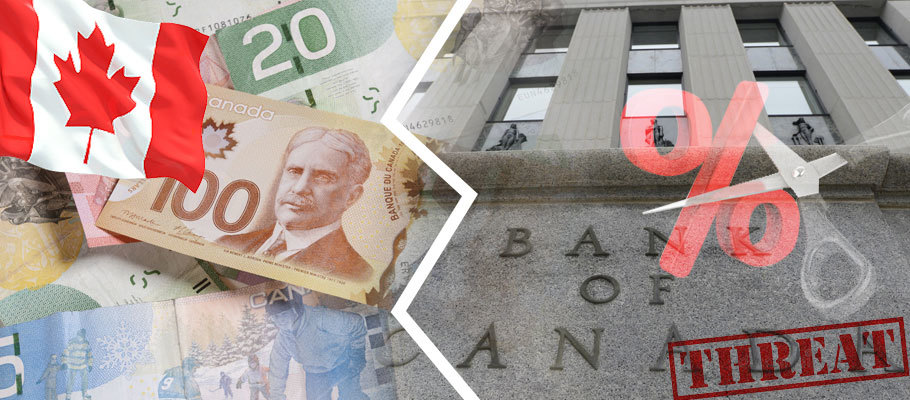
Published: December 12th, 2020
The loonie advanced to its 2020 highs against the greenback this week and put Sterling under pressure after the Bank of Canada (BoC) announced it would stay the course on monetary policy and keep Canadian interest rates at the zero lower bound.
Canada's central bank kept its overnight cash rate in line with market predictions and announced it would continue purchasing up to C$4 billion each week in provincial and national Canadian government bonds until it's convinced a sustained recovery is underway.
Ottawa pointed to indicators of Canadian economic momentum amid a global economic recovery that looks 'stronger than expected' for its decision to hold the line on interest rates but warned of concerns about the impact of rising COVID-19 infections in Canada's largest cities, as well as in major trading partners like the US and EU.
Successful vaccine news is providing some confidence that the pandemic will conclude and bring back a return to some semblance of normal. For the time being, rising infection rate curves could set back recovery in key markets.
The Canadian dollar rose on the news, pushing the top Canadian exchange rate USD/CAD down to 2020 lows last seen at the start of the week. The Bank of Canada noted in a statement that Canada's Dollar — colloquially knows as the 'loonie' because the coin features an engraved image of a Canadian Loon on its tail side — has returned to 2020 highs despite concerns about a short-lived recovery.
Analysts had expected the central bank was leaning toward unchanged interest rates and would sustain the pace of bond-buying under its quantitative easing (QE) programme. Overnight-index-swap market price levels suggested that investors believed there was no more than a 20 per cent chance of an interest rate cut.
That flew in the face of moves by other central bankers in other commodity currency nations like Australia and New Zealand. In November both the Reserve Bank of New Zealand (RBNZ) and the Reserve Bank of Australia (RBA) reacted to rising COVID-19 infections and the return of lockdown restrictions by engaging in new rounds of new monetary 'easing.'
The RBNZ trebled the size of its bond-buying facility, while the RBA slashed its cash rate from a zero lower bound of 0.24 per cent to 0.09 per cent, and extended its own QE programme.
Analysts at BMO Capital Markets in Toronto told investors that the bank's policy decision shouldn't be taken as a concrete, long-term stance. Investors and forex traders shouldn't rule out additional quantitative easing measures that echo what the RBA did last month.
Around the world, many central bankers have acknowledged this year has seen an uncommon degree of coordination between what usually are highly independent and standoffish state institutions. Combined with earlier central bank moves and Canada's return to commercial and travel restrictions, some bank watchers were saying a BoC rate cut could happen this week.
Economists now believe the bank has sent an important signal to the markets. When it uses the phrase zero lower bound to describe Canada's cash rate, it means what it says: interest rates will likely hold steady at rock-bottom levels. That injection of certainty may explain why the Canadian dollar rose in the aftermath of the BoC's statement on Wednesday.
Forex analysts at CIBC noted that the bank's official statement did include a line leaving the door open to further adjustments to quantitative easing programme. BoC Governor Macklem has also spoken openly about the potential for a rate cut. As he and bank officials have not taken the opportunity this week to try and talk the loonie down, the loonie is trading well, and yields have gone up.
Earlier in the week, there were worries that the BoC might announce a surprise rate cut, to head off inflation, but the majority of investors seemed to have shrugged off the speculation even before Wednesday's bank statement. The loonie was among the better performing major currencies most of this week as a result.
Unlike other currencies, Canada's Dollar has seemed largely immune to the domestic or economic news agenda this year. However, economists said it would struggle to absorb the impact of an interest rate cut or similar policy action by the BoC if one had been announced.
The Canadian dollar has been on something of a unique journey in 2020, holding strangely firm amid the historic crude oil plunge. While other oil-dependent economies like Mexico and Norway saw their currencies nosedive, the loonie typically defied the trend and held onto its value.
With Brexit seemingly headed for a no-deal departure for the UK, and positive vaccine news, quite a lot has changed since the Bank of Canada last conducted a policy reset. Britain becoming the first Western nation to vaccinate a patient against coronavirus outside a laboratory setting; essentially kicking off the global rollout of a vaccination programme that business leaders and policymakers everywhere hope will eliminate the need for further lockdowns, and associated restrictions on travel and commercial activity.
The BoC's sister banks in Australia and New Zealand have created a different standard for reacting to renewed COVID restrictions, while typically isolated central banks have often worked in unison this year amid pandemic conditions, leading to a surprising degree of coordination, something the banks themselves openly acknowledge.
But now that forex traders, markets and the loonie have all batted away any short-term worries about bank policy changes or an expanded quantitative easing programme.